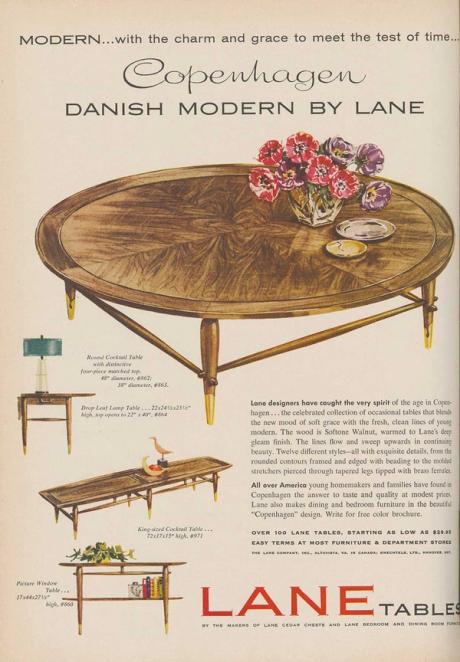
This very succinct and engaging book, about how Danish design and modern Danish helped shape 1950s American design culture and taste, weaves its story around the story of two chairs designed in 1949, their origins, their methods of manufacture and their place within Danish design and, in particular, American markets: Chieftain Chair by Finn Juhl and the Chair by Hans Wegner (initially called Round Chair).
Among the most recognizable Danish chairs, they are described by Maggie Taft as “emissaries” for the strategic creation of an American export market for a wider range of Danish furniture and household objects. This strategy was so successful that, gradually, not only was Danish production fashioned for American consumers, but, in the United States itself, Modern Danish became a term applied to furniture and product design made in the United States. UNITED STATES.
From 2006 in publications in Danish and English, including his 500-page book Danish modern furniture, 1930-2016: rise, decline and re-emergence of a cultural market category, economic historian Per Hansen has proposed that the concept of Danish design was consciously invented with a clear marketing narrative, underpinned by the idea that it was “democratic, social and honest, created from a single sense of moderation and respect for the environment and people. need”. The creators and drivers of this narrative were a coordinated network of Danish designers, manufacturers, their organizations and the Danish government.
Hansen’s research – a major contribution to the history of design without which the title under consideration is unimaginable – was eye-opening. He explained that what began as a plan to revive and diversify the Danish economy in the 1930s by exporting to European markets, was not realized until the late 1940s, when he focused on the US market. In Danish modern furniture, 1930-2016, Hansen devoted an entire chapter to American history. While Taft might have had more details
acknowledged Hansen’s work (there are some footnotes), she delves into the key role played by the American market in creating and transforming the idea of Danish design, consumer responses and copies.
Origin stories
Taft begins his book with the origin stories of his two protagonist chairs, placing them in the context of Copenhagen where, at the upper end of the market, “craftsmanship was king”. It was members of the Cabinetmakers Guild and some architects (rather than the wider Danish furniture trade) who championed this idea; along with the export-minded Danish government, the Den Permanente department store, and various trade bodies, they led the push to the United States.
With the help of the post-war Marshall Plan, the Danish government was instrumental in abandoning import duties on timber, particularly Thai teak, in favor of subsidies to Danish cabinetmakers, who were limited by an insufficient supply of indigenous timber. Taft sheds light on the history of the trade relationship between Denmark and Thailand, which began in 1858. Thanks to Danish subsidies, between 1952 and 1957, teak became the most widely used wood associated with Danish furniture exported to United States.
Taft cleverly organizes his chapters into a compelling narrative that explains, in chapter two (“Made in Denmark”), how Juhl and Wegner’s chairs were modified in design and manufacturing technique for export, and then (in the case of Juhl’s chair as well as other furniture designs) for manufacture in the United States. Between 1949 and 1960, the majority of Danish factories had fewer than ten employees, too few to meet the needs of the American market, which consumed at least 50% of all production of new modern Danish furniture.
The third chapter (“At Home with Danish Design”) explores the sellers, tastemakers and consumers who have promoted Danish design, including at exhibitions. The motivations of American consumers revealed in correspondence with Den Permanente are particularly fascinating. Makers of more traditional tastes included Edgar Kaufmann Jr, of the Museum of Modern Art in New York; he was an influential defender of Juhl and saw significant parallels between Danish and American design cultures. “Both are drawn to organic design… [which] blends form, structure and utility into a living whole,” he wrote. Parallel connections have been seen by American design writers, including Cold War warrior Elizabeth Gordon, editor of Beautiful house and an avid admirer of modern Danish. For Gordon, both cultures exemplified democracy and so Danish design was falsely enlisted in the McCarthy-era struggle against communism in the American home sphere.
The final chapter of the book (‘Mail Order Danish Modern’) covers the plagiarism of Danish modern furniture, with Wegner’s chair described at the time as ‘the most stolen design in the world’. Taft argues that the proliferation of copies helped develop the concept of a modern Danish style and helped popularize it. Ironically, in 1968, when the United States Federal Trade Commission banned the “misleading” use of the word Danish for furniture produced outside of Denmark (except “Danish manner” or “style Danish”), the copies had finally destroyed the export market for this furniture. furniture. These and other stories in Taft’s book make him essential to understanding post-war Danish and American design.
• Maggie Taft, The Chef and the Chair: The Rise of Danish Design in Postwar America, University of Chicago Press, 184pp, 16 color and 36 b/w illustrations, $22.50/£18 (hb), published May 22
• Christopher Wilck is the Custodian of Performance, Furniture, Textiles and Fashion at the Victoria and Albert Museum in London
